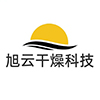product overview
Ultrafiltration and nanofiltration membrane separation technologies belong to cross flow separation filtration. In this filtration process, the flow direction of the feed solution and concentrated solution is parallel to the filter membrane, making it difficult for particles to deposit on the surface of the filter membrane and the filter pores to be blocked. Therefore, the filter membrane can be used repeatedly for a long time. The roll type membrane separation device is the main type of cross flow separation and filtration equipment.
Equipment features
The HW, SMH, and HPL membrane separations specially produced by Millipore (China) Co., Ltd. according to our company's technical requirements have the following characteristics:
1. The product specifications are complete, with separation capabilities ranging from as small as 200 cutting molecular weights to nanofiltration level separation, and as large as 200000 cutting molecular weights to ultrafiltration level separation. There are various membrane materials to choose from. The equipment scale ranges from a membrane experimental device with an area of 0.6m2 to a complete set of equipment for industrial scale production with a membrane area of several hundred square meters.
2 is suitable for a wide range of applications, including purified water, water purification preparation, clarification and purification of liquid products, concentration of semi-finished products, and desalination. Removal of various process requirements such as small molecular weight organic solvents.
3 has unique effects in removing large molecules, purifying medicinal liquids, and partially decolorizing herbal extracts, with low energy consumption and high separation efficiency. It is an irreplaceable device for solid-liquid phase separation. Complete pre-sales and after-sales services, including providing technical consultation, assisting in application testing, on-site installation, debugging, and engineering contracting.
Technical Parameter
Model annotation: HWA-B-C-D
H: Frame type W: Code for roll type membrane separation device
A: Component external dimensions B: membrane package
C: Total membrane area of the equipment [m] D: Material and cutting molecular weight of the filter membrane
SPK polymer alloy PVDF polyvinylidene fluoride PEK polyether ketone
PAN polyacrylonitrile PSF polysulfone
Cutting molecular weight: natural number x 100 Example: HW4-130-PEK100
When selecting, users should choose different specifications and models of membrane devices according to their actual requirements.
2 Membrane element: The membrane element is a key component of the membrane separation device. The fluid enters the material flow layer and flows parallel to the membrane surface. The filtered liquid passing through the filter membrane enters the central filtered liquid pipe in the specified direction in the guide layer and flows out of the component. After concentration, the liquid flows out from the other end of the membrane element. In actual operation, this separation process is repeated and cycled until the predetermined process requirements are met.
3 components: Install the membrane element into a stainless steel container, place the sealing ring between the membrane elements on the container site, and configure the necessary connecting pipe fittings externally to form an independent membrane separation component, which is the basic unit of the membrane separation device.
4. Device: The membrane separation device consists of components, pipelines, racks, booster pumps, containers, control boxes, and protective filters.
Components are basic components, and the specifications and scale of the entire device are determined by the size and quantity of the components. Components are arranged vertically or horizontally in an orderly manner on the rack.
The pipeline includes valves, pipes, couplings, tees, elbows, and other fittings that connect the components together. The diameter of the pipeline is determined through calculation. Some devices have pipelines arranged in a forward and reverse flow system, which is beneficial for flushing out the residual material inside the membrane element, maintaining the smoothness of the flow channel, and extending the service life. There are two types of pipeline materials: stainless steel and engineering plastics.
The components and pipelines are fixed on the rack, making it a complete device.
The booster pump is the power component of the membrane separation device, and the power consumption of the pump is exchanged for the separation effect of liquid components. Therefore, the selection of pump specifications and models is very important and must match the equipment specifications. The head of the pump generally needs to reach 50 meters, and the flow rate depends on the membrane area of the equipment. The type of pump should be determined based on the characteristics of the processed liquid.
Containers are used to store processed or cleaning liquids, and are generally self prepared by users. Their capacity and quantity should be determined according to process requirements. For large membrane separation devices, independent cleaning containers and connecting pipelines should be installed. A cooling system should also be installed inside the container.
The control box contains components such as power switches, pressure gauges, and temperature gauges. It is an essential component during operation. The flowmeter installed on the rack is also a necessary component.
Protect the filter. In order to protect the membrane element from long-term safe operation, a protective filter is installed near the outlet pipe of the booster pump to remove small particles and debris. It is also very necessary. The filter is equipped with a mesh screen larger than 150 mesh. This protector is an optional component of the equipment.




 Customer service1
Customer service1